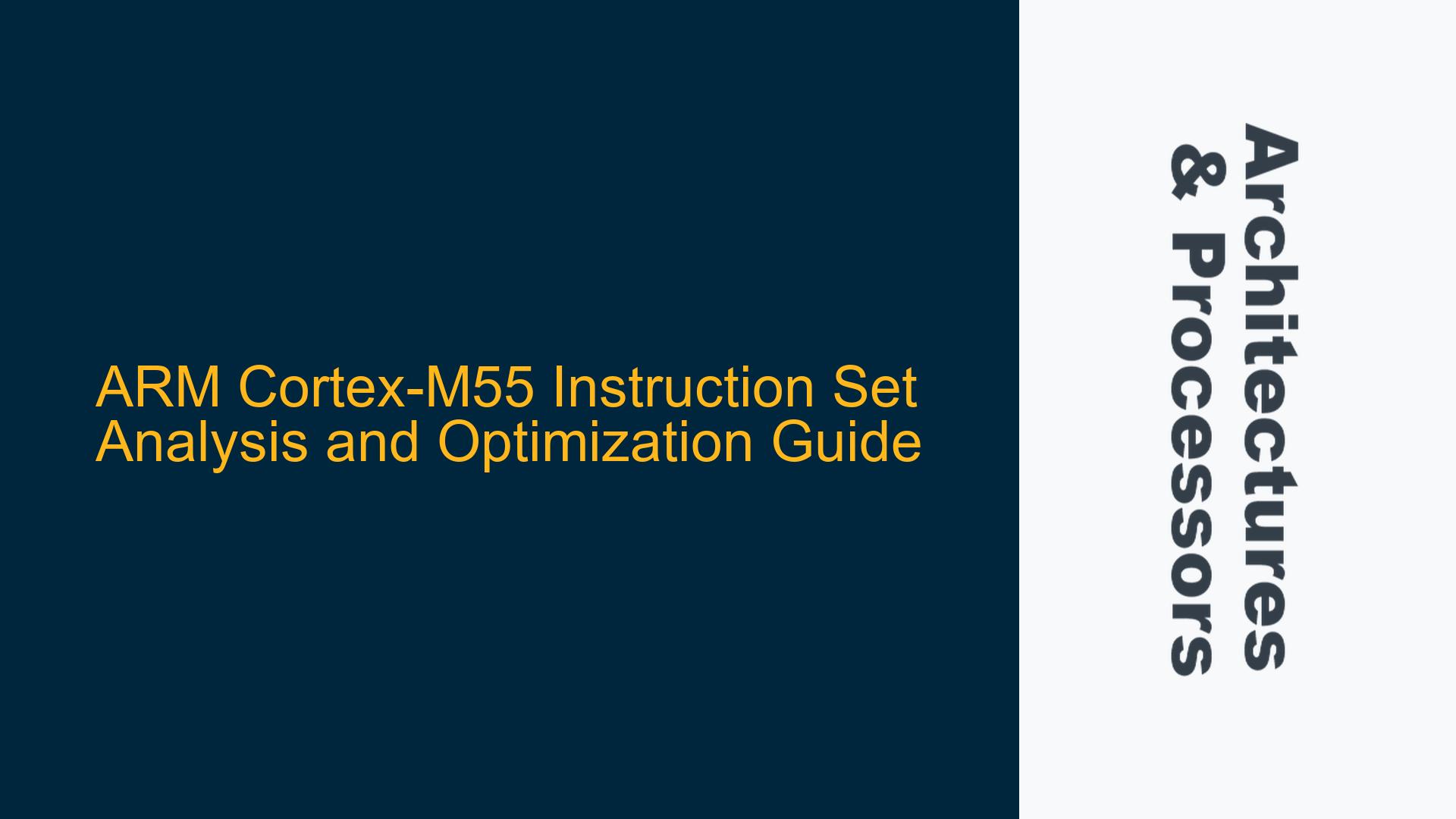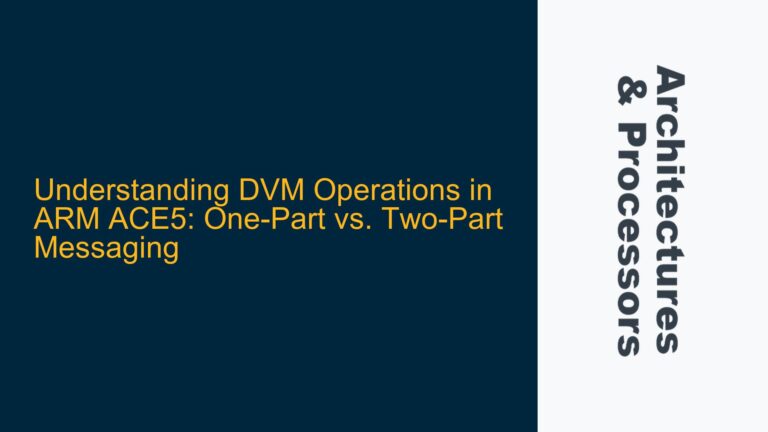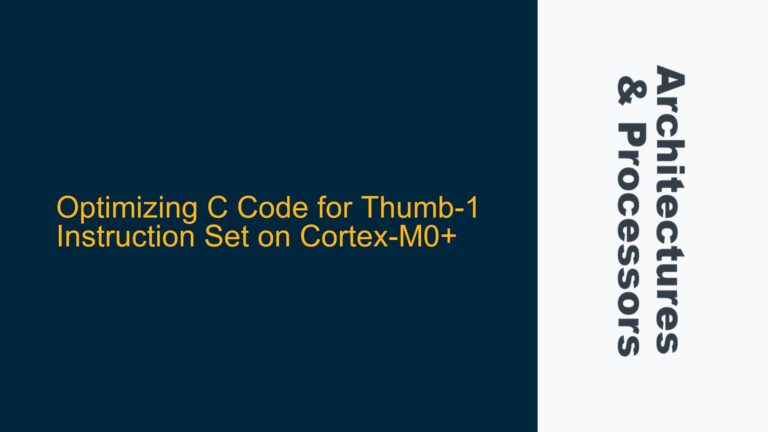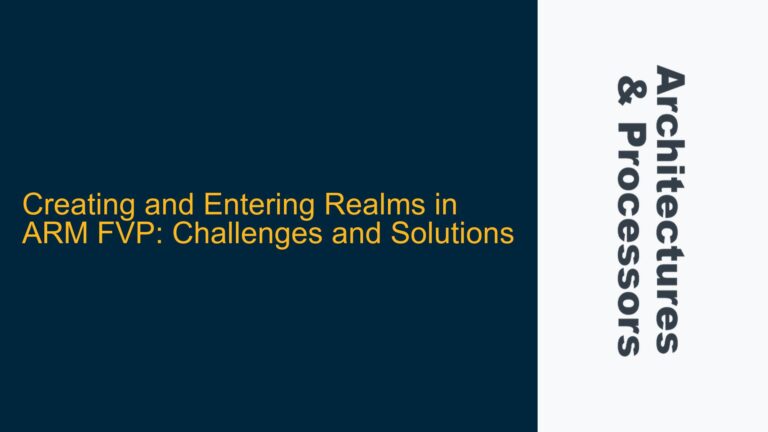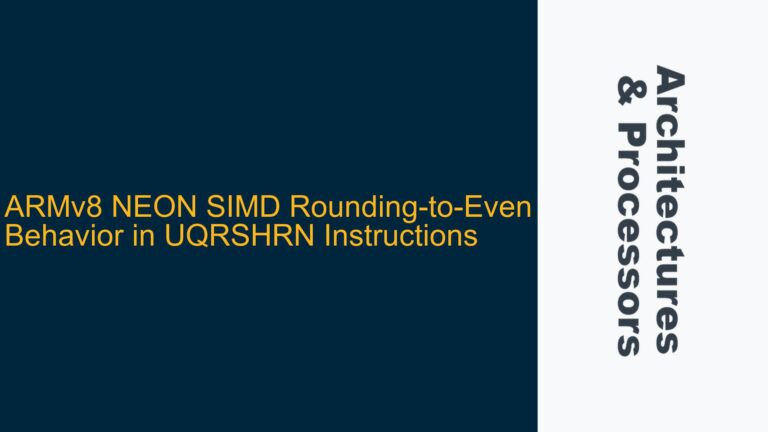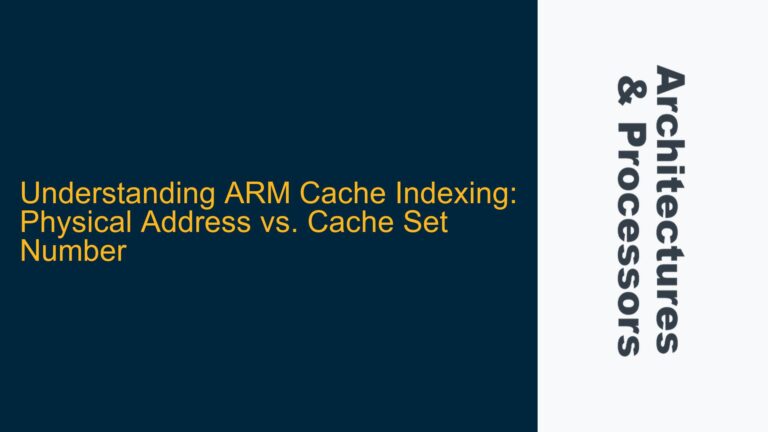ARM Cortex-M55 Instruction Set Architecture and Performance Characteristics
The ARM Cortex-M55 is a highly efficient microcontroller core designed for embedded applications requiring both performance and energy efficiency. It is based on the ARMv8.1-M architecture, which introduces several enhancements over the previous ARMv7-M architecture, including support for the Helium vector processing extension (M-Profile Vector Extension, MVE). The Cortex-M55 instruction set is a blend of traditional ARM Thumb-2 instructions and the new Helium instructions, providing a rich set of operations for both scalar and vector processing.
The Cortex-M55 instruction set can be broadly categorized into several types: data processing, memory access, control flow, and system control. Each instruction type has specific characteristics in terms of clock cycles, memory requirements, and flags affected. For example, basic arithmetic operations like ADD and SUB typically execute in a single clock cycle, while more complex operations like multiply-accumulate (MLA) may take multiple cycles. Memory access instructions, such as LDR and STR, vary in execution time depending on the memory hierarchy and whether the access hits or misses the cache.
The Cortex-M55 also supports various addressing modes, including immediate, register, and indexed addressing. Each addressing mode has implications for both performance and code size. Immediate addressing is generally the fastest but may require larger instruction encodings, while register addressing is more flexible but may involve additional clock cycles for register access. Indexed addressing, which is often used for array and structure access, can be particularly efficient when combined with the Cortex-M55’s load/store multiple instructions.
The Cortex-M55’s performance is further influenced by its pipeline architecture, which is designed to minimize stalls and maximize throughput. The core features a 3-stage pipeline (Fetch, Decode, Execute), with advanced branch prediction and speculative execution to reduce the impact of control flow instructions. Additionally, the Cortex-M55 includes a Memory Protection Unit (MPU) and optional caches, which can significantly affect the execution time of memory-intensive operations.
Clock Cycle and Memory Requirements for Cortex-M55 Instructions
Understanding the clock cycle and memory requirements for each instruction is crucial for optimizing code on the Cortex-M55. The following table provides a detailed breakdown of the clock cycles and memory requirements for a selection of key instructions:
| Instruction | Clock Cycles | Memory Required | Flags Affected | Addressing Mode | Operation |
|---|---|---|---|---|---|
| ADD Rd, Rn, Rm | 1 | 2 bytes | N, Z, C, V | Register | Rd = Rn + Rm |
| SUB Rd, Rn, Rm | 1 | 2 bytes | N, Z, C, V | Register | Rd = Rn – Rm |
| MLA Rd, Rn, Rm, Ra | 2 | 4 bytes | N, Z | Register | Rd = (Rn * Rm) + Ra |
| LDR Rd, [Rn, #offset] | 1-3 | 2 bytes | None | Immediate | Rd = [Rn + offset] |
| STR Rd, [Rn, #offset] | 1-3 | 2 bytes | None | Immediate | [Rn + offset] = Rd |
| B | 1-2 | 2 bytes | None | Relative | PC = label |
| BL | 3 | 4 bytes | None | Relative | LR = PC + 4; PC = label |
| MVE VADDV.
|
2-4 | 4 bytes | N, Z, C, V | Register | Qd = Qd + Qm (vector add) |
The clock cycle counts in the table are approximate and can vary based on the specific implementation and configuration of the Cortex-M55. For example, the LDR and STR instructions may take additional cycles if the memory access results in a cache miss or if the memory system is busy with other operations. Similarly, the MVE instructions, which are part of the Helium extension, may have variable execution times depending on the vector length and the complexity of the operation.
The memory requirements for each instruction are based on the size of the instruction encoding. Thumb-2 instructions are typically 2 bytes, but some instructions, such as MLA and BL, require 4 bytes due to their more complex encoding. The MVE instructions also require 4 bytes, reflecting their advanced capabilities.
The flags affected by each instruction are important for understanding the impact on the program state. For example, the ADD and SUB instructions affect the N (Negative), Z (Zero), C (Carry), and V (Overflow) flags, which are used for conditional branching and other control flow operations. The MVE instructions also affect these flags, but in the context of vector operations, which can be more complex to manage.
Optimizing Cortex-M55 Code for Performance and Efficiency
Optimizing code for the Cortex-M55 involves a combination of instruction selection, memory access patterns, and pipeline utilization. One of the key considerations is the choice of instructions for a given operation. For example, using the MLA instruction for multiply-accumulate operations can be more efficient than separate multiply and add instructions, as it reduces the number of instructions and can take advantage of the Cortex-M55’s hardware multiplier.
Memory access patterns are another critical factor in optimization. The Cortex-M55’s memory system includes optional caches and an MPU, which can significantly impact performance. To maximize cache efficiency, it is important to structure data accesses to take advantage of spatial and temporal locality. For example, accessing elements of an array sequentially can result in better cache utilization than random access. Additionally, using the LDM and STM instructions for loading and storing multiple registers can reduce the number of memory accesses and improve performance.
Pipeline utilization is also important for optimizing Cortex-M55 code. The core’s 3-stage pipeline is designed to minimize stalls, but certain operations, such as branches and memory accesses, can still cause pipeline bubbles. To reduce the impact of branches, it is important to use techniques such as loop unrolling and branch prediction. For memory accesses, aligning data structures to cache line boundaries and using prefetching techniques can help to minimize stalls.
Finally, the Cortex-M55’s Helium extension provides powerful vector processing capabilities that can be leveraged for performance-critical applications. The MVE instructions allow for parallel processing of multiple data elements, which can significantly accelerate operations such as digital signal processing and machine learning. However, using Helium effectively requires careful consideration of data alignment, vector length, and instruction scheduling.
In conclusion, optimizing code for the ARM Cortex-M55 involves a deep understanding of the instruction set, memory system, and pipeline architecture. By carefully selecting instructions, optimizing memory access patterns, and leveraging the core’s advanced features, developers can achieve significant performance and efficiency gains in their embedded applications.
